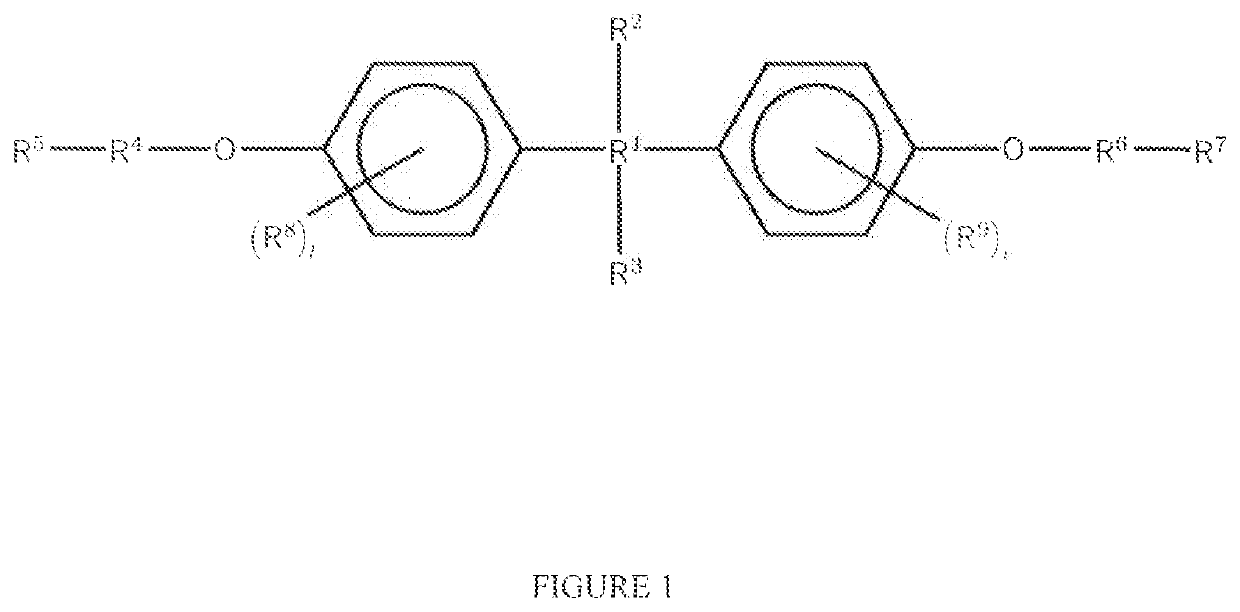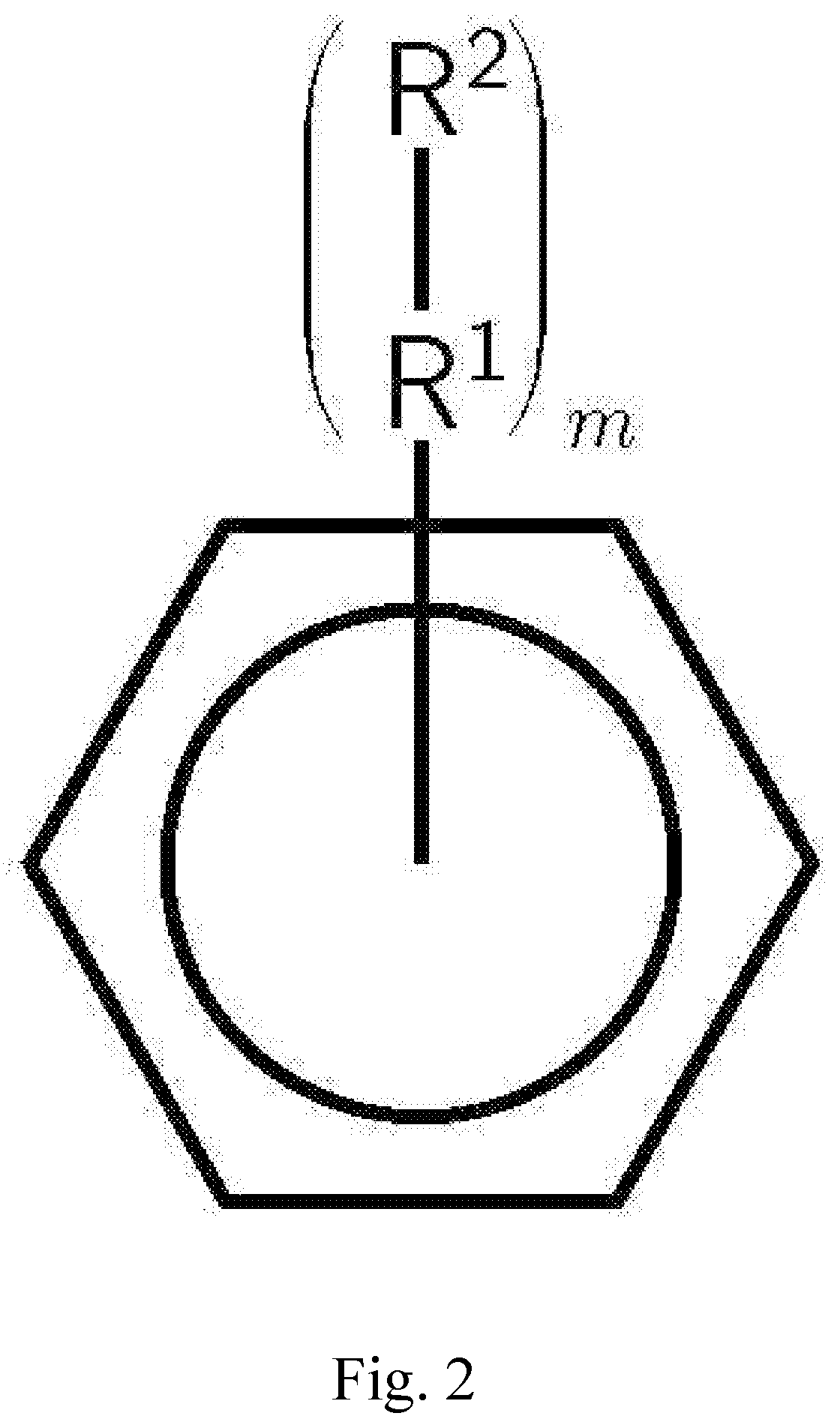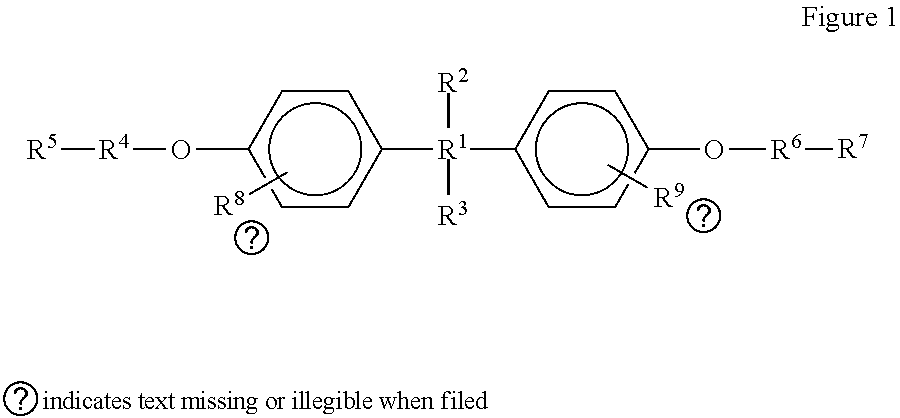Compositions Useful for Diverting or Stopping Fluids in Subterranean Operations
a technology for subterranean operations and fluids, applied in fluid removal, wellbore/well accessories, chemistry apparatus and processes, etc., can solve problems such as potential change, complicated maintenance of zone permeability, and difficulty in regulating these properties, and achieve the effect of minimizing leakag
- Summary
- Abstract
- Description
- Claims
- Application Information
AI Technical Summary
Benefits of technology
Problems solved by technology
Method used
Image
Examples
Embodiment Construction
[0053]Phenols, phenyl esters, Phenyl ethers, phenyl thioethers, diphenylamines, triphenylamines and aryl derivatives as shown in FIG. 1 for use as diverter particles in the method disclosed herein include those having the formulas shown in FIG. 1.
[0054]Example compounds for the diverting agents shown in FIG. 1 include bisphenols of type A, B C, AP, bisphenol acetates, bisphenol formats, bisphenol phthalates, and bisphenol maleates.
[0055]Example compounds for diverting agents shown in FIG. 2 include pyromellitic, trimellitic, mellitic, anhydrides and acids, and C1 to C6 esters of these mellitic acids.
[0056]The physical properties of diverting particles, essentially comprising mixtures of Compounds I and II, may be further modified by adding a polymer or other material such as chelating agents, wherein the molecular weight of the polymer or the other material is selected to adjust the specific gravity of the diverting particle, wherein typically the polymer is a low solubility or degr...
PUM
| Property | Measurement | Unit |
|---|---|---|
| temperature | aaaaa | aaaaa |
| temperature | aaaaa | aaaaa |
| molecular weight | aaaaa | aaaaa |
Abstract
Description
Claims
Application Information
 Login to View More
Login to View More - R&D
- Intellectual Property
- Life Sciences
- Materials
- Tech Scout
- Unparalleled Data Quality
- Higher Quality Content
- 60% Fewer Hallucinations
Browse by: Latest US Patents, China's latest patents, Technical Efficacy Thesaurus, Application Domain, Technology Topic, Popular Technical Reports.
© 2025 PatSnap. All rights reserved.Legal|Privacy policy|Modern Slavery Act Transparency Statement|Sitemap|About US| Contact US: help@patsnap.com



